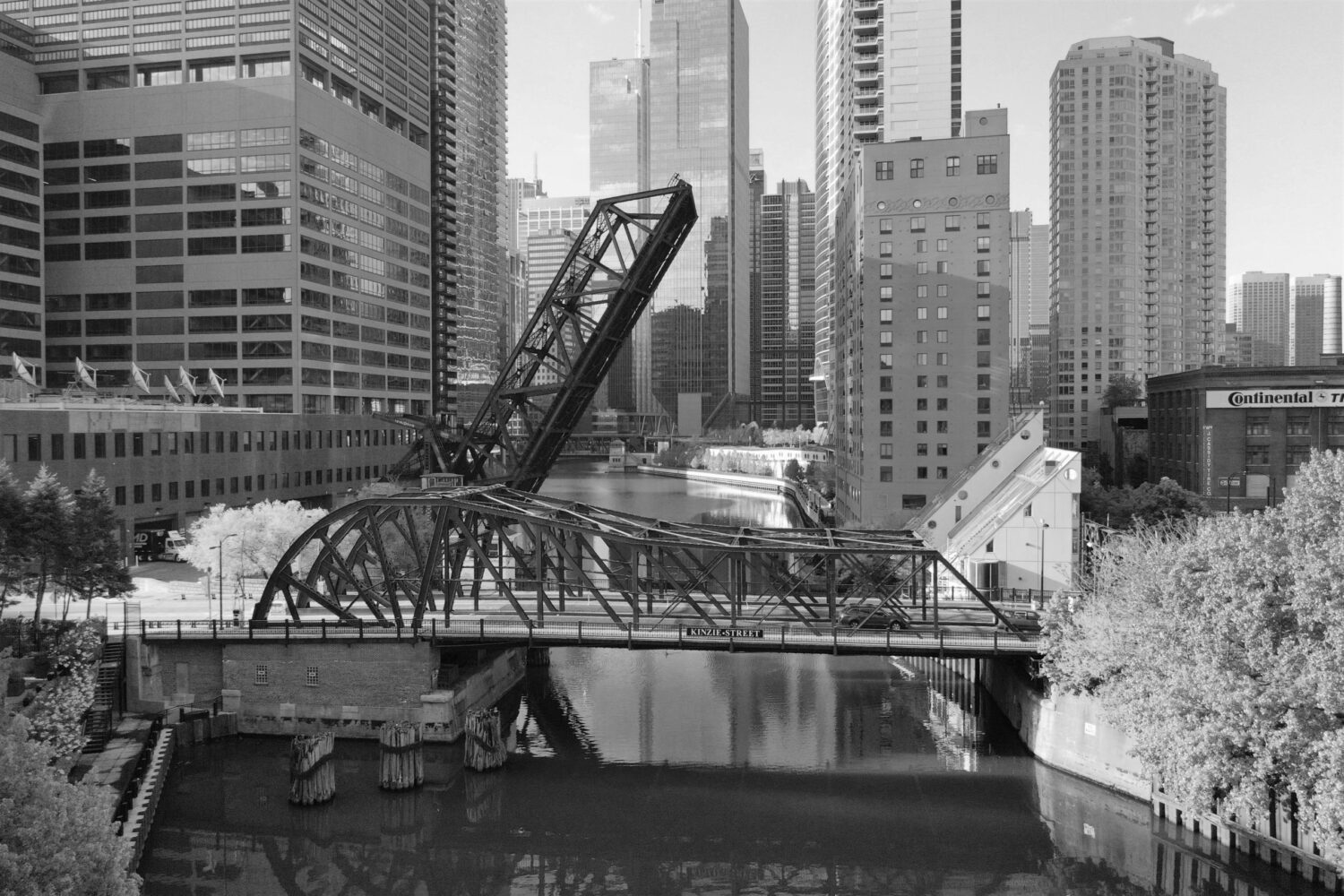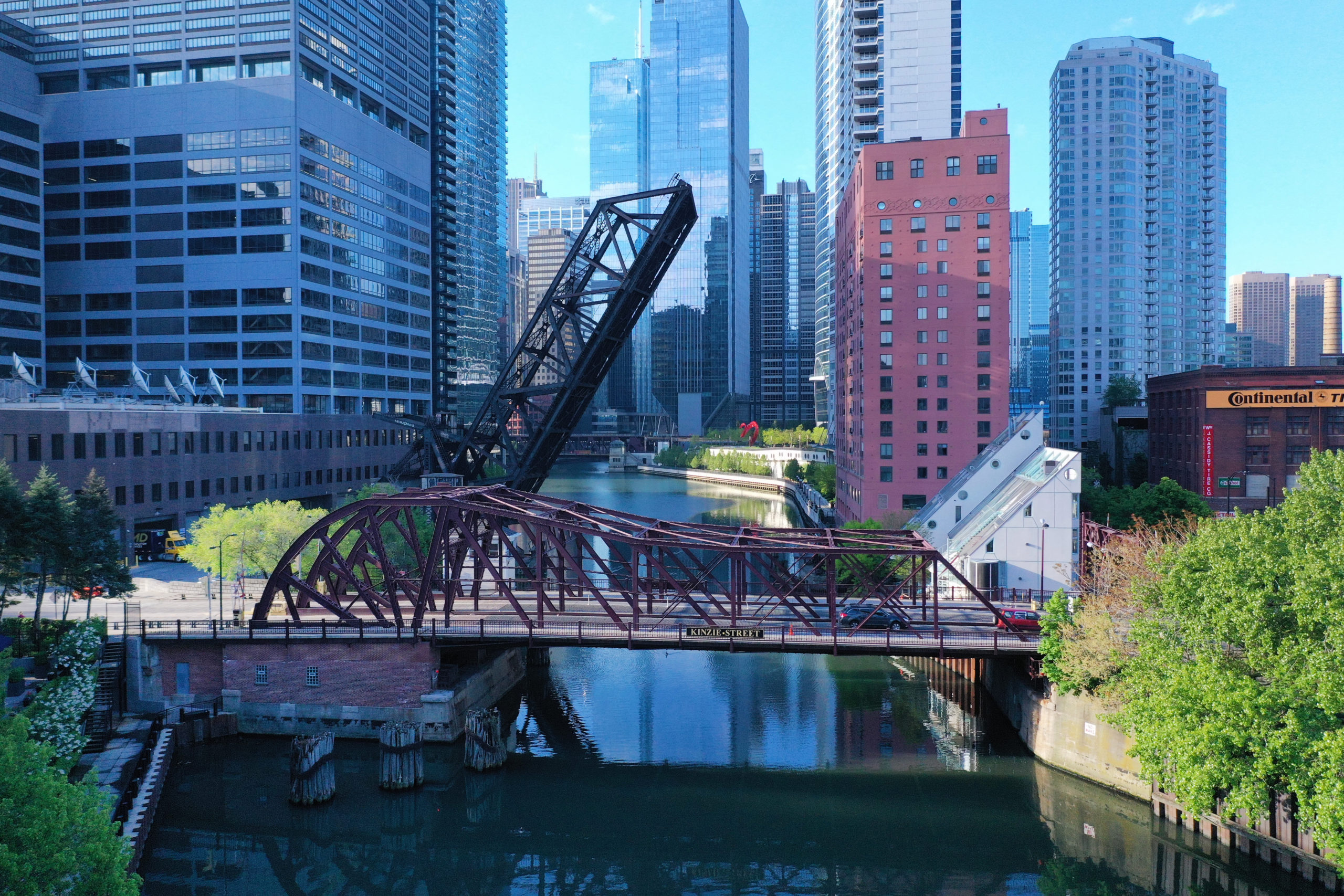
Our name pays homage to one of the most iconic bridges in Chicago, the city in which we were founded. The Kinzie Street Bridge was built in 1909 and stands on the historic site of the first span across the Chicago River. It is the only single-leaf bascule bridge from the “first generation” design that remains in the city today. The view to the south features the Kinzie Street railroad bridge, a Chicago Landmark, raised high above the water and framing the constantly changing skyline.
Our name reflects our founder’s vision for the firm – revolutionary, lasting and bold. It is a reminder of the importance of tradition and stability in an ever-evolving world.
Hover over the icons on the image below to learn more about notable landmarks along this stretch of the Chicago River.


